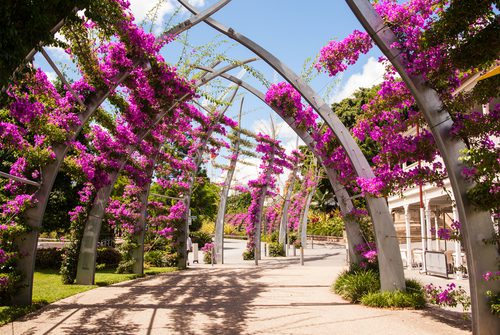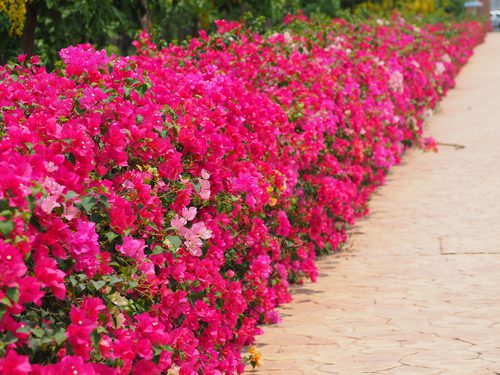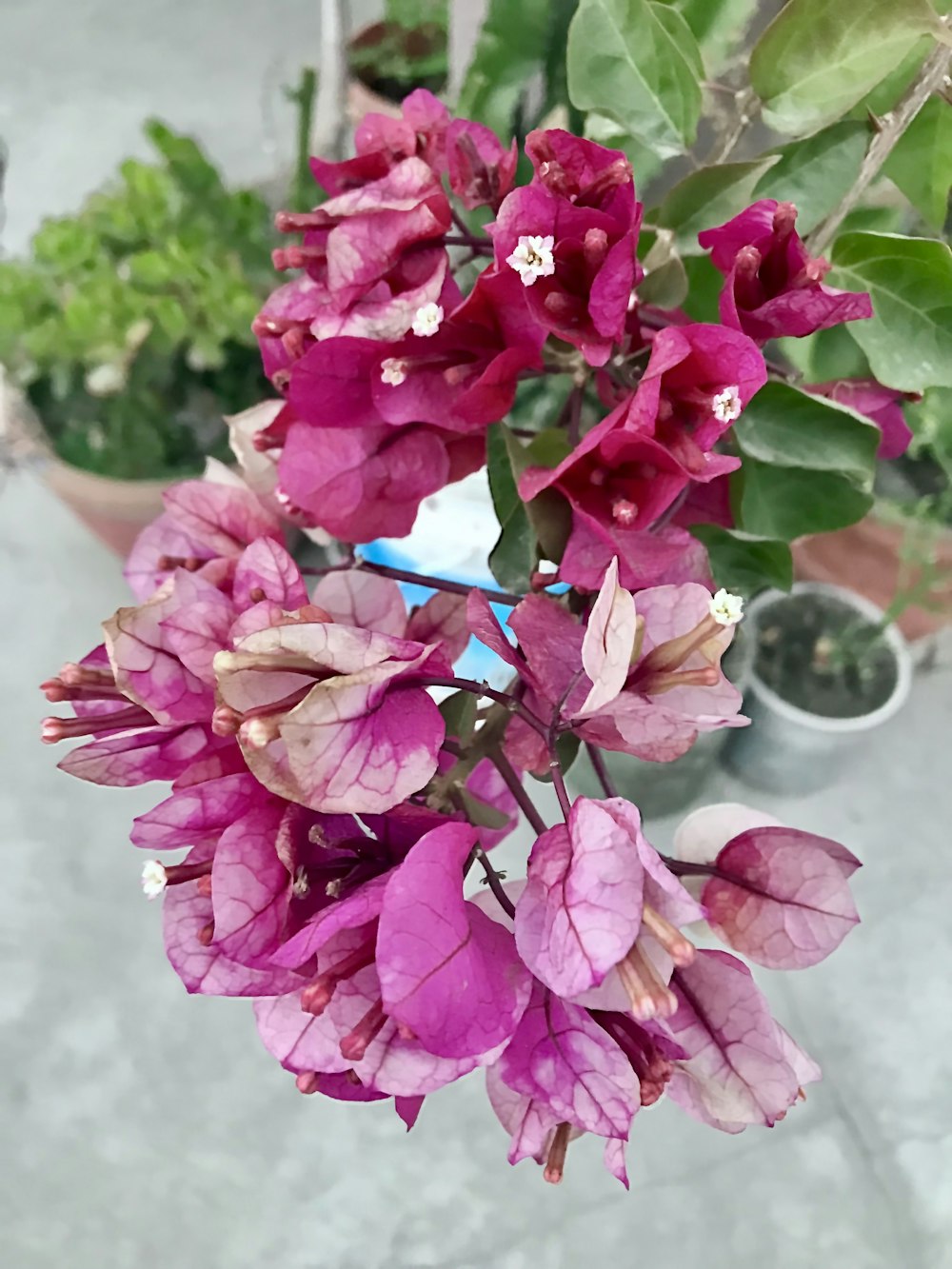This one is probably the most widely grown flower plant in India, and even though you may have somehow skipped hearing its name, you certainly are familiar with its ethereal, feather-light beauty. Yes, we are speaking of the Bougainvillea Glabra flower plant.
What is Bougainvillea Glabra?
Since French explorer Louis Antoine de Bougainvillea (the flower is named after him) introduced this plant to the world in the 18th century, Bougainvillea has come a long way. One of its varieties, Bougainvillea glabra is not a climber. Despite being a common sight all around, it is not recognised by its actual name. In India, this evergreen plant with thorny stems is highly popular. Due to its drought-resistance and hardy nature against hot and dry climates, it is one of the most common plants used to adorn boundaries and compound walls. Most popular in the country of its origin, Brazil, Bougainvillea glabra has found admirers across the globe.
Typically used to decorate yards and backyards, its flowers are edible and are often used to prepare teas, salads and various beverages despite their bitter taste. The Bougainvillea glabra climber is also used to control weeds.
Bougainvillea Glabra: Physical description
Bougainvillea glabra is a woody climber with extremely small (and typically white or off-white) flowers that have a highly attractive, colourful, paper-like texture that come in shades of pink, purple and red.
Commonly referred to as ‘paper flower’ or ‘lesser bougainvillea’, it should not be confused with ‘greater bougainvillea’, which has round floral tubes and longer floral bracts. Lesser bougainvillea or bougainvillea glabra has distinct, pentagonal floral tubes and short floral bracts.
With its drooping branches that are either glabrous or sparsely hairy, bougainvillea flaunts dark green, elliptical leaves, arranged spirally along the branches, being widest along the middle.
Also read all about Money plant benefits
Bougainvillea Glabra: Key facts
| Botanical name | Bougainvillea Glabra |
| Common name | Lesser bougainvillea, paper flower |
| Plant type | Evergreen climber |
| Family | Nyctaginaceae |
| Foliage colour | Green |
| Life cycle | Annual |
| Native | Brazil, Peru |
| Height | 10-20 ft |
| Width | 6-10 ft |
| Sun exposure | Full exposure |
| Soil type | Well drained/sandy/clay |
Bougainvillea flower

With its potential to become a tree, bush or vine, bougainvillea glabra can be contained or made to act as covers in an unsupported state. In a supported state, they grow vigorously as climbers, using their thin, short and slightly curved thorns as a means of attachment.
Also read all about syngonium plant benefits
Bougainvillea with white bracts

Bougainvillea climber

Bougainvillea as a potted plant

Bougainvillea as a fence

Yellow Bougainvillea

Purple Bougainvillea

White Bougainvillea

Red Bougainvillea

Bright Pink Bougainvillea

How to grow Bougainvillea Glabra?
To grow the plant, green cuttings of the stems must be planted during spring. A branch can also be directly planted in the ground. If planted in a container with gardening soil, your plant would bloom several times a year, supported by regular pruning. Pruning should be done after the flowering period.
How to grow Bougainvillea Glabra indoors?

You can grow Bougainvillea Glabra indoors, too provided you maintain your home’s temperatures around 60 to 70 degrees Fahrenheit. For it to thrive indoors, you will have to ensure your plant bright sunlight for some part of the day. Keep it moderately moist and go for regular pruning.

How to maintain Bougainvillea Glabra?
- A mixture of loam and organic compost will be great to plant Bougainvillea Glabra.
- This plant loves the sun. Make sure it gets plenty of that. At least 6-8 hours are recommended.
- Potted plans require regular watering. During the hot months, water your plant at least once a week. Otherwise, allow the top 2 inches of soil to dry out between waterings.
- Use nitrogen and phosphate-rich fertiliser during the blooming season that lasts from May to December. A slow-release fertilizer also provides steady feeding.
- You can prune shoots to shape the plant at the end of the flowering cycle.
Bougainvillea Glabra pest
Bougainvillea is commonly attacked by caterpillars and aphids or mould.
Bougainvillea Gabra medicinal use
In traditional medicine, various parts of the Bougainvillea plant have been
used for their potential therapeutic properties such as wound healing, diuretic effects and anti-inflammatory properties. Leaves and stems of the plant are crushed and applied to wounds to aid in healing and prevent infection. Some cultures use its extracts to reduce inflammation in case of arthritis or skin irritations. In some traditional practices, Bougainvillea glabra has been used as a diuretic. It is believed to help increase urine production and promote the elimination of excess fluids from the body. Studies also indicate that compounds found in Bougainvillea glabra may have anti-diabetic properties. The plant is also believed to be rich in compounds with antioxidant properties, which can help protect cells from oxidative stress and damage.
FAQs
Is bougainvillea glabra poisonous?
No, bougainvillea glabra has no toxic effects.
How many bougainvillea species are there in the world?
There are more than 300 bougainvillea species in the world.
What is the right time to plant a bougainvillea?
Spring or early summer are recommended to plant a bougainvillea.








